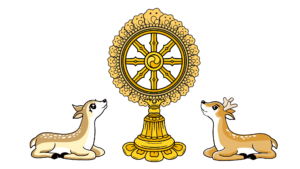
Sutra
Read the canonical teachings of Buddhism.
What are Sutra or Sutta?
Sutra (Sanskrit) or Sutta (Pāli) are the canonical teachings of Buddhism.
Why Read Sutra or Sutta?
“If virtuous men and women can accept and uphold the Sutra, read it, recite it, explain and preach it, or transcribe it … with these merits they will be able to adorn their six sense organs, making all of them pure. By reading sutras we can purify our six sense organs—eye, ear, nose, tongue, body, and mind, and this is stated in the Lotus Sutra.”
Chan Master Sheng Yen
Buddhist monk & founder of Dharma Drum Mountain
Buddhist monk and Chan Master Sheng Yen of Dharma Drum Mountain taught:
“What is the function of reading, reciting sutras? In this regard Master Shandao (613–681) compared sutras to a bright mirror we can use to reflect on our own mind. In his Commentary on the Sutra of Contemplation on the Buddha of Infinite Life, Shandao said, “To read or recite a Mahayana sutra is to use the sutra as a bright mirror for reflection, and through repetitive reading and searching, one is able to develop wisdom. By opening one’s wisdom eye, one will loathe suffering and long for true happiness, or nirvana.” So while reading a sutra, we should reflect on our speech, action, and mind, to check if they go against the Buddha’s teachings. If yes, then we should mend our ways soon and cultivate ourselves according to what the sutra teaches.”
Sutra reading helps us realize its meaning
“Every time you read a sutra, you will gain more understanding about the subtle meaning. When I was a novice I asked my master, “What are those sutras saying?” All he said was, “Just keep reading! By reading them more often you’ll understand. What other people tell you is always limited, but by familiarizing yourself with the sutra text, you will gain much more understanding.”
Sutra reading helps us cultivate concentration
“I teach my disciples to rein in their six sense organs, and concentrate their mind on chanting and reciting the sutra, while using their ears to listen attentively without thinking about the meaning.”
Here are our recommendations of the canonical teachings of Buddhism, Sutra (Sanskrit) or Sutta (Pāli).
PALI CANON
SuttaCentral is a reliable source of early Buddhist texts, known as the Tipiṭaka or “Three Baskets” of the Buddhist Pāli Canon. This is a large collection of teachings attributed to the Buddha or his earliest disciples, who were teaching in India around 2500 years ago. They are regarded as sacred canon in all schools of Buddhism.
Access to Insight is a reliable source of early Buddhist texts, known as the Tipiṭaka or “Three Baskets” of the Buddhist Pāli Canon. This is a large collection of teachings attributed to the Buddha or his earliest disciples, who were teaching in India around 2500 years ago. They are regarded as sacred canon in all schools of Buddhism.
MAHAYANA CHINESE BUDDHIST CANON
BTTS is a reliable source of translations of Chinese Mahāyāna Sutras into English.
Dharma Pearls is the translation works of Chinese Āgama and Avadāna sections of the Taisho canon into English.
TIBETAN BUDDHIST CANON
84000 is the most comprehensive translation of Tibetan Buddhist Canon texts into English. It is an on-going project.




